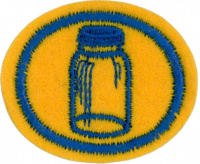Difference between revisions of "AY Honors/Food - Canning/Answer Key/es"
(Updating to match new version of source page) |
(Created page with "</noinclude> <noinclude>") |
||
| Line 6: | Line 6: | ||
<noinclude></noinclude> | <noinclude></noinclude> | ||
{{ansreq|page={{#titleparts:{{PAGENAME}}|2|1}}|num=1a}} | {{ansreq|page={{#titleparts:{{PAGENAME}}|2|1}}|num=1a}} | ||
| − | <noinclude> | + | <noinclude></noinclude> |
| − | </noinclude> | + | <noinclude></noinclude> |
| − | |||
| − | <noinclude | ||
| − | |||
{{CloseReq}} <!-- 1a --> | {{CloseReq}} <!-- 1a --> | ||
{{ansreq|page={{#titleparts:{{PAGENAME}}|2|1}}|num=1b}} | {{ansreq|page={{#titleparts:{{PAGENAME}}|2|1}}|num=1b}} | ||
| − | <noinclude> | + | <noinclude></noinclude> |
| − | </noinclude> | + | <noinclude></noinclude> |
| − | |||
| − | <noinclude | ||
| − | |||
{{CloseReq}} <!-- 1b --> | {{CloseReq}} <!-- 1b --> | ||
{{ansreq|page={{#titleparts:{{PAGENAME}}|2|1}}|num=1c}} | {{ansreq|page={{#titleparts:{{PAGENAME}}|2|1}}|num=1c}} | ||
Revision as of 20:26, 16 September 2021
Nivel de destreza
2
Año
1929
Version
04.01.2025
Autoridad de aprobación
Asociación General
1
1a
1b
1c
A boiling water bath is a method of canning that uses a large pot of boiling water. The filled jars are placed on the rack, then the rack is lowered into the boiling water. Process for the required time as listed in the recipe. This method of canning is the most popular technique for processing canned foods.
1d
This is a method of canning that involves a shallow pan with water in the bottom. The lid for this method is rather deep, as to allow for the top clearance of the filled jars. The shallow pool of water is heated to boiling as to create steam. The steam processes the filled jars. The U.S. Department of Agriculture (USDA) does not recommend steam canning because processing times for currently available equipment has not been researched.
1e
This method of canning uses a large pot where the product to be canned is heated to boiling as to purge out any impurities. The filling is then packed into hot jars after which the seals and bands are processed. The jars will seal on there own. No processing is needed for this method of canning. This USDA recommends that this process not be used because it does not prevent all risk of spoilage.
1f
Under acidic conditions, pectin forms a gel, and it can be used as an edible thickening agent in processed foods. This effect is used for making jams and jellies.
1g
Food is packed into jars after being cooked and while still hot. It is then placed in a pressure cooker.
1h
Food is packed into jars in an uncooked state (or sometimes after being scalded). It is then placed in a pressure cooker.
1i
Killing all forms of bacteria and other pathogens present on an item (such as a jar).
1j
Immersing a fruit or vegetable in boiling water for a minute or two. This splits the skin, easing the task of removing the peel.
1k
A jelly is a sweet or savoury food gel, usually made through the addition of gelatin or pectin to edible liquids. "True" jellies are smooth textured and made from fruit juice, such as grape jelly.
1l
is a type of sweet spread or condiment made with certain fruits or vegetables, sugar, and sometimes pectin. In the United States and Canada, jams are invariably made from mashed or ground fresh fruits.
1m
invariably refers to a conserve derived from a citrus fruit, most commonly from oranges. The recipe includes sliced or chopped fruit peel, which is simmered in fruit juice and water until soft; indeed marmalade is sometimes described as jam with fruit peel.
1n
Pickling is the process of preparing a food by soaking and storing it in a brine containing salt, acid (usually vinegar), or both, a process which can preserve otherwise perishable foods for months. The resulting food is called a pickle.
2
2a
2b
2c
3
4
5
6
6a
6b
6c
6d


